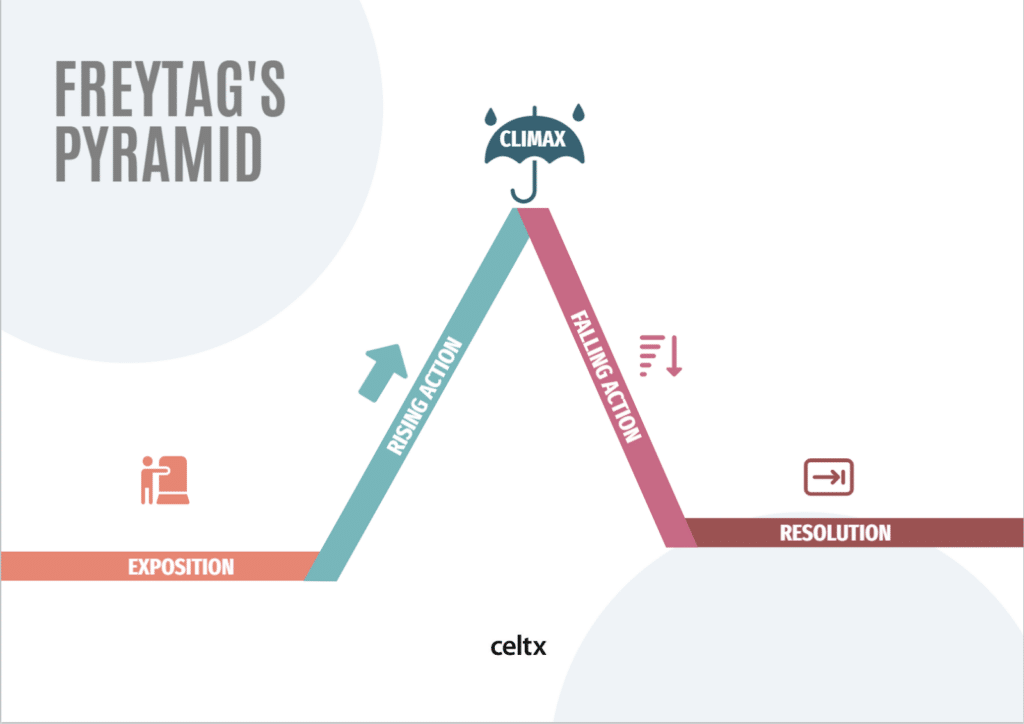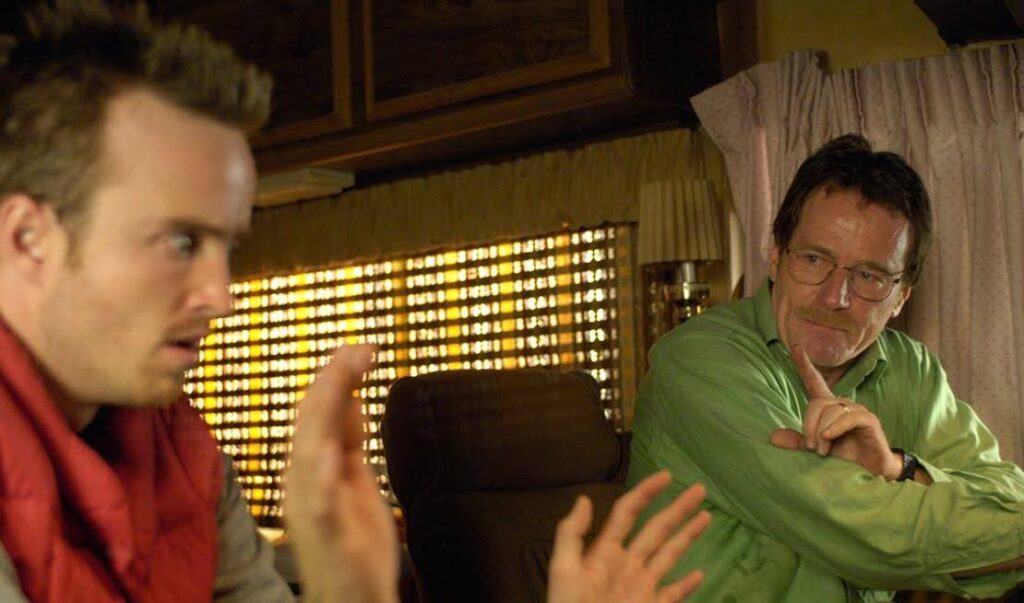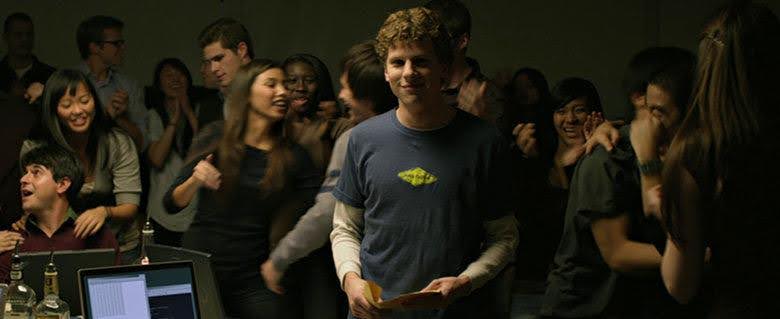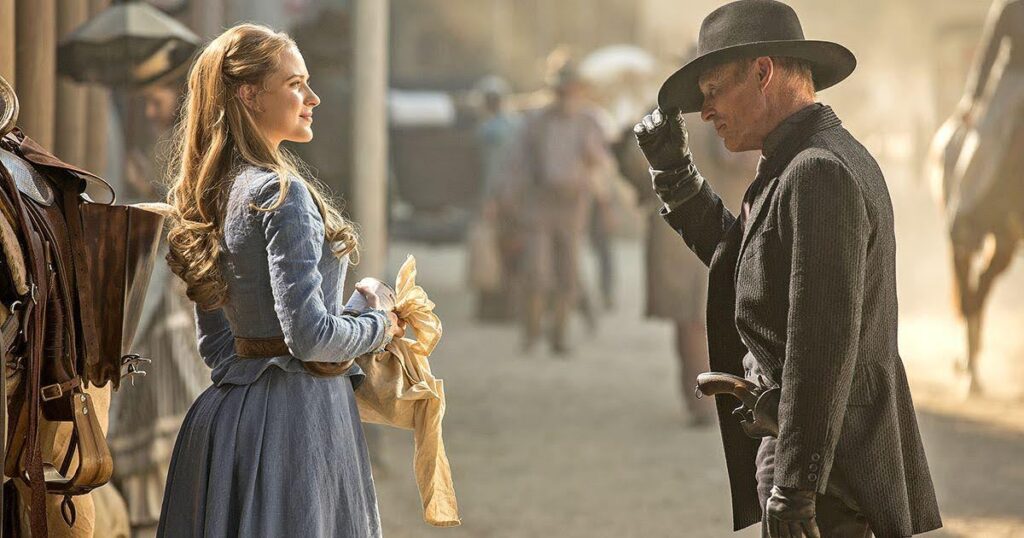Storytelling has been a cornerstone of all cultures on Earth since the beginning of human history. We have always thrived on telling stories, whether around the campfires of the ancient Earth or through screens in modern times.
But what hasn’t changed is our hunger for stories and our desire to share them. Over time, we have developed different frameworks from which to present these stories, with writers using them to create compelling narratives.
Among these frameworks, the five-act structure stands out. Its origins stem from classical theater, taking shape on the stages of ancient Greece in works by playwrights such as Sophocles and Euripides. Even Roman playwrights adopted the model, like Seneca. The structure became more widely known and recognized in Elizabethan England, championed by none other than William Shakespeare.
In This Article:
- Why the Five-Act Structure Works for Stories That Sell
- Three Act Vs Five Act: Which One is Right for YOU as a Storyteller?
- Examples of Modern Media Using the Five-Act Structure
- Breaking Down the Five Acts
- How the Five-Act Structure Can Help You Sell Your Story
- Do You Always Have to Stick to the Rules?
- Conclusion: Applying the Five-Act Structure with Celtx
The five-act structure has remained relevant for modern storytellers across multiple mediums. So whether you’re writing a novel or a screenplay, it provides a strong foundation for complex, character-driven stories. With the seemingly unending number of streaming services and easily accessible content, the five-act structure is built to keep audiences engaged and wanting more.
So, how is the five-act structure broken down?
- Exposition – Introduce the characters, setting and the story’s central conflict/hook.
- Rising Action – Develop the story’s complications, intensifying the central conflict.
- Climax – Turning point where the story reaches its peak moment.
- Falling Action – Characters deal with the consequences of the climax.
- Resolution – The story’s central conflict is resolved, tying up any loose ends.
We can illustrate the five-act structure using Freytag’s Pyramid.

But what is it about the five-act structure that has kept writers coming back to it for centuries? Why is it so effective? In today’s article, we’ll take a closer look at the five-act structure and why it’s still so popular after all these years.
We’ll also dive into some of our favorite examples of five-act structure in modern media, and what made them so successful. Perhaps we’ll throw in some top tips on how you can use the five-act structure to create a captivating story!
Food for thought: Read “The Most Important Question a Writer Can Ask” by bestseller author Robert Swartwood for Writer’s Digest
Why the Five-Act Structure Works for Stories That Sell
Whether in theater, novels or movies, the five-act structure has enduring commercial appeal, especially for stories that evoke strong emotional engagement while delivering a satisfying payoff. This also applies to character-driven stories, allowing gradual development and a slow increase of tension. This means when we reach the story’s climax, it feels earned rather than rushed.
Let’s take a closer look at these reasons and unpack how they make the five-act structure so successful:
Well-paced storytelling
The progression between the acts feels natural, ensuring that the story unfolds at an engaging pace for the audience. Act I establishes the stakes, Act II builds anticipation, Act III delivers a high point that keeps the audience drawn in. Acts IV and V maintain the suspense build up over the course of the story so far, but tie everything together, leaving the audience with a satisfying ending.
Rich character development
Five acts mean more space for your characters to evolve gradually, with the ability to layer in more subtle personality traits and motivations. Multidimensional and relatable characters is the name of the game! The structure works particularly well for a large ensemble cast of characters or a focus on long-term character growth, such as in a TV series.
Strong thematic elements
As well as more opportunity for gradual character development, the five-act structure gives you the luxury to explore themes further. The structure adopts subplots (B and C stories) to complement the main storyline, reinforce themes or highlight contrasts between character arcs. With the added complexities the five-act structure allows, you can make the narrative more engaging.
Satisfying resolutions
Not all endings need to be happy, but they need to satisfy the audience. By slowly building to the climax and the subsequent resolution, and not rushing, the five-act structure leaves us with a sense of closure. This is especially important in a film or TV show’s commercial success, where audiences expect both emotional and narrative payoff.
Three Act Vs Five Act: Which One is Right for YOU as a Storyteller?
For most of us, we’ll be familiar with the three-act structure. Essentially, the five-act structure is just a further broken-down version of its three-act counterpart.
Let’s first explore the three-act structure:
- Setup – Introduces main characters, setting and problem.
- Confrontation – Characters face increasing obstacles as the story builds tension.
- Resolution – The problem is solved, and the story concludes.
This structure is ideal for straightforward narratives, where the emphasis is on plot rather than character depth. Usually, you would use this for fast-paced, action-oriented stories or genres that rely on a single protagonist. Most movie scripts and novels will use the three-act structure. There are always exceptions to the rule, such as Flynn’s Gone Girl (2012), Highsmith’s The Talented Mr. Ripley (1955).
The five-act structure, as we already know, adds a layer of complexity in character, theme and story lines. Most television shows will be written within the five-act structure, especially if you’re dealing with ensemble casts and character-driven dramas, where the stakes gradually escalate.
Of course, these are guidelines, and there is no right or wrong structure for you to use. Some writers will purely have a preference, and that’s okay. Try both and see what works best for you.
For more on how to write a good story using the three-act structure, check out our complete guide here.
Want to compare the three-act structure vs. the five-act structure? Arc Studio can help.
Examples of Modern Media Using the Five-Act Structure
Now we have a clear idea of the five-act structure and how it’s used, let’s see it in action.
The Godfather (1972)
One of the most beloved movies of all time, The Godfather used the five-act structure to adapt Puzo’s original novel. We can break the movie down according to this:
- Exposition – After an assassination attempt on his father, protagonist Michael Corleone returns to his Mafia family, from whom he’s distanced himself until now.
- Rising Action – Tension rises as Michael slowly becomes more involved in the family business. He joins forces with his brother, Sonny, in planning to kill the rival Mafia family.
- Climax – After Michael kills two of the family’s rivals, he’s forced to flee to Sicily. Sonny and Michael’s first wife are killed in a car bomb originally intended for him in revenge.
- Falling Action – Michael returns to New York and marries Kay, beginning to rebuild their future away from the Mafia. Meanwhile, his family tries to persuade him to return. His father, Vito, dies after being warned there’s a traitor in the family.
- Resolution – Michael discovers the traitor is Tressio, a family member. He asserts himself as the new head of the family, shutting Kay out completely. He’s transformed.

Breaking Bad (2008-2013)
TV shows are most likely to use the five-act structure, as they include an ensemble cast that all need to be developed over several episodes and seasons. Each of the Breaking Bad episodes features the five-act structure in which Walter White tends to have to get himself out of increasingly bizarre and dangerous situations.
Let’s break down the pilot episode and what it would look like in terms of structure.
- Exposition – Walter’s mundane life as a high school chemistry teacher is disrupted as he’s diagnosed with terminal lung cancer.
- Rising Action – Desperate for money to leave for his family, he decides to cook meth, partnering with former student Jesse Pinkman.
- Climax – A drug deal goes wrong when Walter and Jesse are confronted by dangerous dealers. To escape, Walter kills one of them with a chemical reaction.
- Falling Action – Walter must process the violent events, trying to decide what to do with the remaining dealer, Krazy-8.
- Resolution – Walter returns home with a newfound sense of power as he enters the criminal underworld.
The pilot focuses on introducing us to Walter, the high stakes of his terminal illness, and the prospect of leaving his family with nothing. As the seasons progress, we see more of Jesse’s story, Walter’s wider family and the Albuquerque underworld.
The five-act structure is perfect here, as it allows a slow burn up to the shocking climax, leaving the characters to deal with the consequences until the end of the episode. The story is all about action and characters actually doing things, which is what the five-act structure allows.

Take Control of Your Story Arc.
Develop your acts with Celtx’s professional tools to ensure a compelling story flow.
Try Celtx today!
The Social Network (2010)
Let’s face it, Aaron Sorkin has complete free reign when it comes to writing, breaking the rules in new and exciting ways. The Social Network is no exception in his groundbreaking screenwriting portfolio. While the Mark Zuckerberg biopic doesn’t follow a strict structure with a non-linear narrative, we can see how it lends itself to the five-act structure.
- Exposition – After being dumped by his girlfriend, Harvard student Mark Zuckerberg creates FaceMash, a controversial social site that catches the university’s attention.
- Rising Action – Mark meets the Winklevoss twins, who propose a Harvard-exclusive social network, but he begins his own rival platform, The Facebook, with help from friend Eduardo.
- Climax – As Mark’s social network grows rapidly, he partners with Sean Parker, ultimately sidelining Eduardo.
- Falling Action – After being cast out, Eduardo sues Mark, the Winklevoss twins also taking legal action against The Facebook. All feel betrayed as the network becomes a global phenomenon.
- Resolution – Mark faces multiple lawsuits, feeling isolated by his decisions. He reflects, sending a friend request to his ex-girlfriend. The ending reflects his personal losses against his professional success.

Breaking Down the Five Acts
It’s all well and good knowing the structure itself, but how exactly do you put it into practice? Here are our top tips for utilizing the five-act structure for your next story!
- Exposition – This is your chance to set the stage for your characters and the world. Create intrigue by hinting at deeper issues and themes that will come into play later.
- Rising Action – Make sure you accelerate the problem, placing more obstacles in your characters’ paths. Your B and C subplots often begin here, adding depth to the A story.
- Climax – This is your story’s turning point, where everything goes wrong, and the stakes are at their highest. The challenge the protagonist faces must seem impossible.
- Falling Action – Here, the characters should regroup and fight back. You can still place obstacles in the way, but they face them with renewed vigor and are actively working towards a solution.
- Resolution – It’s time to wrap things up. Resolve your central conflict and ensure every loose end is tied up to provide emotional and narrative closure.
How the Five-Act Structure Can Help You Sell Your Story
Once you’ve written your story, and you’re looking to pitch to publishers, agents or producers, adhering to the five-act structure can give you an advantage. Here’s why:
Proven appeal
The structure has a long history of success (thank you Shakespeare!) with balanced pacing, rich character arcs and satisfying resolutions all make a story marketable. When you present a well-structured story, it demonstrates your understanding of how to keep the audience engaged.
Complexity without confusion
When you have multiple story lines and character arcs, it can become a little bit of a minefield. The five-act structure provides a clear road map for writers, ensuring you create a coherent narrative.
Emotional engagement
Publishers and producers always seek stories that resonate. The structure is a great tool to connect with your audience by building emotional tension and delivering cathartic payoffs.
Build your story seamlessly with Celtx. Try it for free today!
Do You Always Have to Stick to the Rules?
I hope the five-act structure’s ears are burning right now! Yes, it’s a powerful storytelling tool, but remember it’s not a rigid formula. Just look at Aaron Sorkin and his consistent strife to bend and break the rules in service of the story!Some of the best stories subvert traditional structures, just like Sorkin and The Social Network. Take movies like Pulp Fiction (1994) and Momento (2000), and TV shows like Westworld (2016-2022), that have played with non-linear storytelling to keep audiences guessing and engaged. If you want to learn more about how they subvert structural conventions, check out their screenplays by clicking on their titles!

If you’re interested in writing TV shows like Westworld, check out our TV writing blog!
The key is to maintain narrative consistency even when bending the rules. If you deviate from the five-act structure, there needs to be a reason for it, whether to build suspense, explore a unique thematic element, or develop characters in an unconventional way.
Conclusion: Applying the Five-Act Structure with Celtx
If you’re ready to use the five-act structure in your writing, our screenwriting and film production software suite here at Celtx can help streamline the process. Outline, storyboard, break down your scenes, manage complex arcs and keep track of multiple plot lines in one place!
The five-act structure is a timeless framework that continues to shape modern storytelling. Whether you’re working on a novel, screenplay, or television series, this structure can help you craft a well-paced, emotionally engaging story with rich character development and satisfying conclusions.
Put your new-found knowledge to work today with Celtx!
For more story development tips, try these articles:
- Mastering the Art of Screenwriting: Part 1 of Our Screenwriting Series
- Plot Outline Techniques: How to Structure Your Story for Maximum Impact
- The Best and Worst Character Arcs in Modern TV and Film

